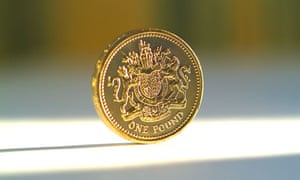One Pound Coin
Jul 29, 2019 Fewer than 1million coins went into general circulation at 935,000, making it the rarest old-style £1 coin out there. A circulated version recently sold on eBay for £16 and it proved popular. The round £1 coin lost its legal tender status at midnight on 15 October 2017. However, the round £1 coin can continue to be deposited into a customer’s account at most High Street Banks in the UK. Specific arrangements may vary from bank to bank, including deposit limits. It is recommended that customers consult with their bank direct. Round £1 coins can also be donated to a charity. The specification of the new £1 coin; Why the new coin has been introduced. The pound coin (£1) was introduced in 1983 to replace the Bank of England £1 banknote which was discontinued in 1984 (although the Scottish banks continued producing them for some time afterwards; the last of them, the Royal Bank of Scotland £1 note, is still in production as of 2013). The designs on the one pound coin changed annually in a largely five-year cycle, until the introduction of the new 12-sided pound coin in 2017. 1 GBP = 1.31 USD. Queen Elizabeth II (1982 - 2020) Coin type. Circulation coins. An estimated 131 million old round £1 coins have yet to be returned to the Royal Mint, nearly three years after they were withdrawn from circulation. The “most secure” 12-sided £1 coin entered circulation in March 2017, while the old round £1 coin lost its legal tender status in October 2017.

| Value | 1 pound |
|---|---|
| Mass | 10 g |
| Diameter | 31.11 mm |
| Thickness | 1.90 mm |
| Edge | Milled |
| Composition | Cupronickel |
| Years of minting | 1990–2000 |
| Catalog number | — |
| Obverse | |
| Design | Irish harp |
| Design date | 1971 (first use 1928) |
| Reverse | |
| Design | Red deer |
| Designer | Tom Ryan |
| Design date | 1990 |
The one pound (£1) (Irish: punt) coin was the coin of the Irish pound. It was used in Ireland from 20 June 1990 until its formal adoption of euro currency in 2002. The last issue was minted in 2000.
The coin was the largest Irish coin since decimalisation: its diameter was 3.11 centimetres (1.22 in) and its mass was 10 grams (0.35 oz). The coin was almost identical in dimensions to the old penny coin that circulated until 1971, and was similar in diameter to, but thinner than, the half-crown coin. The edge was milled, and a dotted line ran along the edge of each face. Unlike some previous Irish coins, it was very different from its British equivalent, as the Irish pound separated from the British pound in 1979.
The design on the reverse was of a red deer, by Irish artist Tom Ryan, based on photographs taken by Sean Ryan[1] of that species from the Irish national deer herd in Killarney National Park.
On 29 November 1999 a £1 coin was issued to commemorate the new millennium. The design on the reverse was based on the 'Broighter Boat' in the National Museum of Ireland. Alan Ardiff and Garrett Stokes designed the coin.
During the early circulation of the coin, many payphones and vending machines which had been changed to accept the £1 coin also accepted the old penny, which was no longer legal tender and of little value to collectors. As a result, vending machine operators lost money, and they incurred further costs to alter the machines so as not to accept the pennies. Further, coins dated 1999 (produced by the Royal Mint of the United Kingdom and not the Central Bank of Ireland) were rejected by many vending machines (including parking meters in Dublin) as they were lighter than the standard coins, having been produced from a different alloy.

How Much Is A One Pound Coin Worth February 2021

References[edit]
- ^The Wild Red Deer of Killarney, Sean Ryan, ISBN1-902011-09-0
Cached
External links[edit]
One Pound British Coin Value
